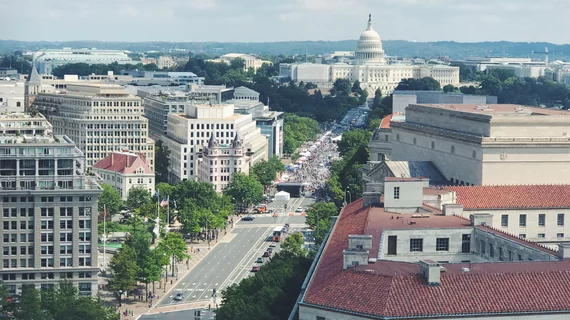Healthcare leaders react to $1.7T government funding bill
Congress’s $1.7 trillion spending bill appears likely to become law within a matter of hours, funding the federal government through fiscal 2023.
But healthcare stakeholders throughout U.S. medicine, including radiology leaders, aren’t waiting for the ink to dry before speaking their minds.
If the bill passes mostly as is, its most sweeping effect on healthcare will be cutting pay rates in the Medicare physician fee schedule (MPFS) by only 2% rather than the earlier proposed 4.5%. (The cuts would rise to 3.25% in fiscal year 2024.)
Also, the Medicare conversion factor will get a decidedly modest 2.5% increase. Provider groups had lobbied hard for 4.5%.
While the mitigation of the expected overall hit is striking many healthcare leaders as an appreciated lifeline, the final numbers are getting little love from physicians and the groups that represent them.
Among the sharpest criticisms from multispecialty organizations:
Jack Resneck Jr., MD, president, American Medical Association: “The AMA is extremely disappointed and dismayed that Congress failed to prevent Medicare cuts next year, threatening the financial viability of physician practices and endangering access to care for Medicare beneficiaries. This 2% cut following two decades of flat payment rates will have consequences on healthcare access for older Americans.”
We are deeply worried that many practices will be forced to stop taking new Medicare patients at a time when access to care is already inadequate. Congress must immediately begin the work of long-overdue Medicare physician payment reform that will lead to the program stability that beneficiaries and physicians need.”
Anders Gilberg, senior vice president of government affairs, Medical Group Management Association: “MGMA is deeply dismayed by the failure of Congress to adequately address the full 4.5% cut to the Medicare conversion factor set to take effect on Jan. 1. It is unconscionable that, while every other provider category in the Medicare program is receiving a positive 2023 inflation update, physician rates will be cut.”
Medical practices are in no way immune to the impact of the broader economy, and have been suffering from significant staffing shortages, wage inflation and drastic cost increases across the board. Any cut to the Medicare conversion factor is simply untenable in this environment.”
From radiology groups:
Jacqueline Bello, MD, chair of the American College of Radiology’s board of chancellors: “At a still precarious time for practices coming off a pandemic, with increased inflation and already declining reimbursement, we are disappointed Congress has not protected patient access to care by fully offsetting these added cuts.”
All of medicine must work with lawmakers in 2023 to enact Medicare payment reform that stabilizes the provider environment and safeguards patient access to lifesaving care in their communities.”
Bob Still, executive director of the Radiology Business Management Association: “While any Medicare funding cuts are disappointing and will no doubt hurt independent practices, RPAN (RBMA’s Radiology Patient Action Network) is encouraged our nationwide advocacy efforts—including over 7,000 phone calls, 38,000 text messages and e-mail correspondence—pressed Congress to shrink the percentage of those cuts as well as include in-conversion factor support in their final funding package. However, there is much more to do.”
Year after year of Medicare funding cuts to independent medical practices must be stopped, and we will continue our congressional advocacy efforts to implement long-term solutions like inflationary adjustments for independent providers.”

